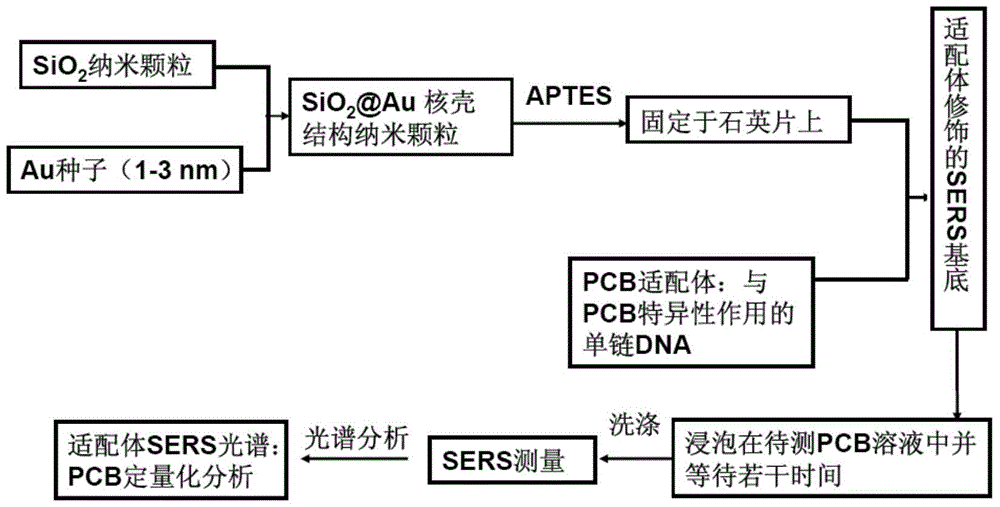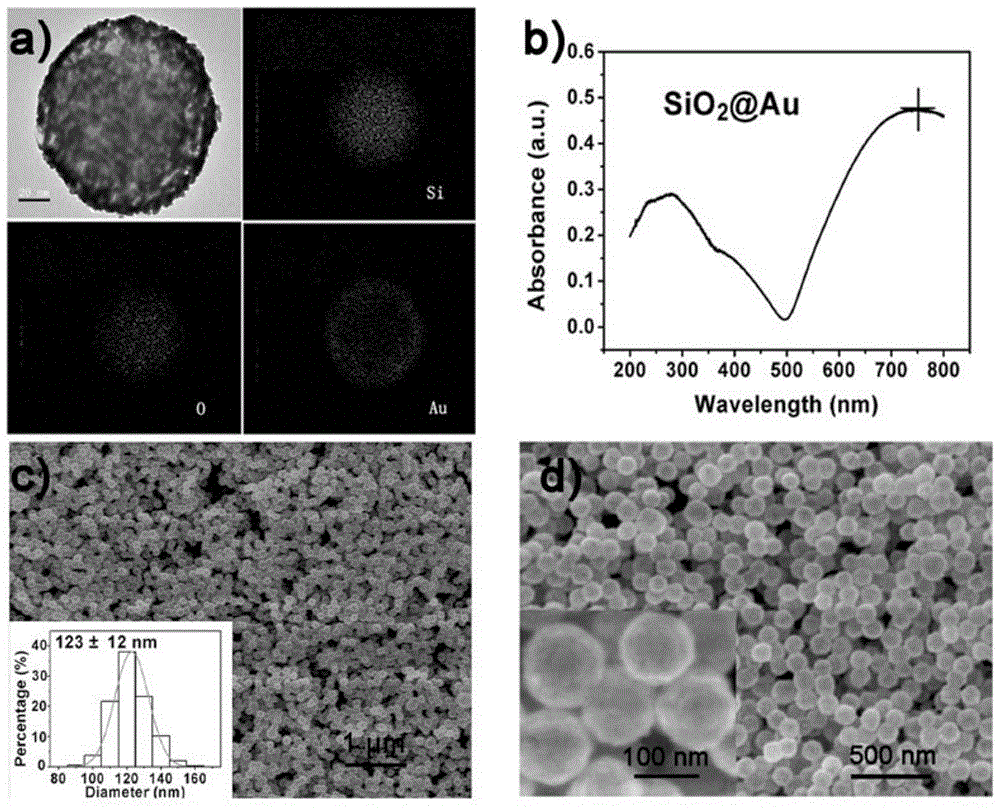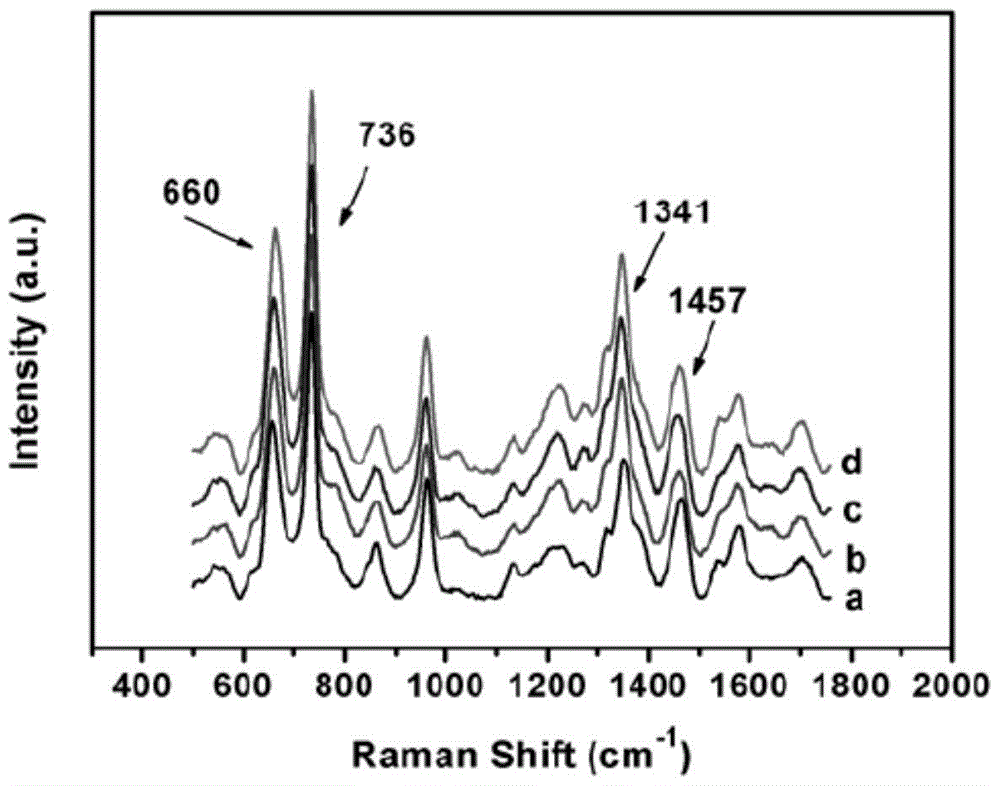A Surface-Enhanced Raman Spectroscopy Method for the Quantitative Detection of Polychlorinated Biphenyls
A surface-enhanced Raman and polychlorinated biphenyl technology, which is used in Raman scattering, test sample preparation, material excitation analysis, etc., to achieve good uniformity of morphology and particle size
- Summary
- Abstract
- Description
- Claims
- Application Information
AI Technical Summary
Problems solved by technology
Method used
Image
Examples
Embodiment 1
[0021] Substrate preparation and characterization of gold-coated silica materials
[0022] First, to synthesize 1-3nm gold seeds, add 0.5mL of 1.0M sodium hydroxide to 45mL of ultrapure water, followed by adding 50mM of THPC. Here, THPC acts as both a reducing agent and a surfactant. After the mixed solution was vigorously stirred for 5 min, 36 µL of 1.0 M chloroauric acid solution was added. The color of the reaction solution changed from colorless to dark brown immediately, the stirring speed was reduced, and the stirring was continued for 15 minutes. The obtained reaction solution was stored in a refrigerator at 4°C for future use. Then, APTMS-modified silica nanoparticles were synthesized. For the preparation of silica nanospheres, first mix 3mL of ammonia solution (30wt%) with 50mL of pure alcohol solution, then add 1.5mL of TEOS solution, and stir the mixed solution overnight at low speed. Take 10 mL milky white product and add excess APTMS (200 µL), and the mixture ...
PUM
 Login to View More
Login to View More Abstract
Description
Claims
Application Information
 Login to View More
Login to View More - R&D
- Intellectual Property
- Life Sciences
- Materials
- Tech Scout
- Unparalleled Data Quality
- Higher Quality Content
- 60% Fewer Hallucinations
Browse by: Latest US Patents, China's latest patents, Technical Efficacy Thesaurus, Application Domain, Technology Topic, Popular Technical Reports.
© 2025 PatSnap. All rights reserved.Legal|Privacy policy|Modern Slavery Act Transparency Statement|Sitemap|About US| Contact US: help@patsnap.com



